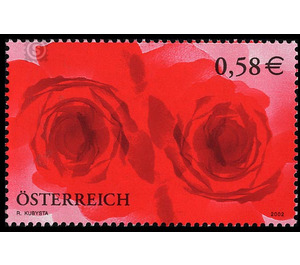roses - Austria / II. Republic of Austria 2002 - 58 Euro Cent
Theme: Flora
| Country | Austria / II. Republic of Austria |
| Issue Date | 2002 |
| Face Value | 58.00 |
| Edition Issued | 1,000,000 |
| Color | red |
| Printing Type | Photogravure |
| Stamp Type | Commemorative |
| Item Type | Stamp |
| Chronological Issue Number | 1716 |
| Chronological Chapter | OOS-OE2 |
| SID | 596999 |
| In 57 Wishlists | |
Roses are found in more than one hundred species rich in form and numerous genera and in all colors, with black and green roses occupy a special place in the breeding. In our latitudes, only the wild rose was native, while the much larger garden rose probably originated in Persia. In the seventh century BC, the latter came to Greece and Italy, where she became a symbol of women relatively quickly. In the floral language she was already at that time an expression of affection. This brand is not only for love letters, but also for all sorts of congratulations, invitations, apologies, also for advertising etc. intended. This stamp, one could also say greeting mark, should be a means of expression for positive, congratulations, recovery and other wishes, sympathy, condolences, joy, friendship, affection and, last but not least, for love. The breeding of roses is often done with passion. In order to honor high-ranking personalities, the names of those to be honored are awarded to the breeding results in solemn ceremonies. For example, there is a Cardinal King Rose, which may have a certain resemblance to the rose on the stamp. At the 2002 Opera Ball, a beautiful, velvety, red rose was dedicated to the popular singer Agnes Baltsa.


